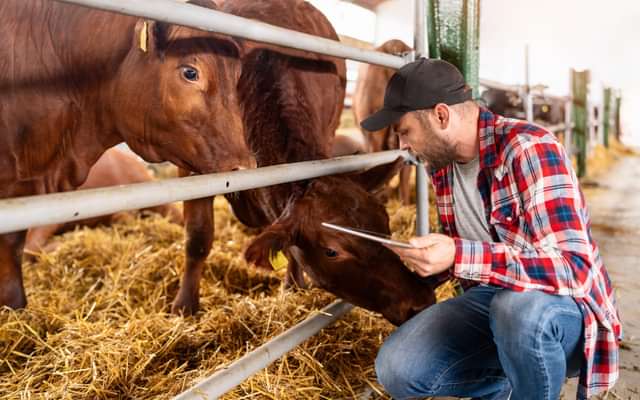Beware The Deepfake: How To Safeguard Animal Agriculture’s Reputation

Have you seen that recent viral video where Taylor Swift milks a cow while dancing on stage in rhinestone cowboy boots? No? Well, while that video does not exist, it’s the kind of thing that could be created by generative AI as a deepfake video.
And while this example feels a little silly, livestock producers, their supply chain allies and commodity groups should be on the lookout as the threat of deepfake videos looms large.
We all know that misinformation and fake undercover videos can have profound consequences in agriculture. Today, producers and their advocates need to be on the lookout for deepfake videos that are digitally created to depict false scenarios. Once identified, you, as commodity groups and farmer suppliers, must have a crisis communication plan in place to maintain (and even enhance) your reputation. You need to understand the implications of deepfakes and be prepared to respond effectively.
Understanding Deepfakes In Agriculture
Producers, with their intimate knowledge of agricultural practices, can often tell right away if an “undercover” video is fake. This step in discrediting a deepfake is crucial to protect livestock producers’ reputations individually and as a whole.
Commodity leaders and industry partners should encourage producers to verify the authenticity of any online videos and report suspicious content. By leveraging your organization’s years of animal agriculture experience, you can play a vital role in identifying and debunking deepfakes.
Recognizing Deepfakes: A Farmer's Perspective
Be aware that while producers may possess the expertise to recognize deepfakes, consumers will likely not be able to tell the difference.
Producers can identify subtle inconsistencies within videos, such as incorrect equipment usage or anatomical inaccuracies, that betray their fraudulent nature. You may never win the battle over the video’s authenticity with consumers, but you will protect the producer’s reputation with neighbors, peers and within the industry.
Tools And Resources For Deepfake Detection
One way to discredit a deepfake is by using available tools and platforms for verifying digital content authenticity. For example, the Content Authenticity Initiative offers valuable resources online, including a tool where you can upload content for review.
Additionally, supporting policies and legislation aimed at protecting farmers from malicious deepfake attacks is essential for the long-term protection of our livestock friends’ social license to farm.
Proactively Communicating About Deepfakes
In a deepfake incident, swift and transparent communication is important. While it’s often difficult for livestock producers to be proactive in these situations, you need to put a crisis response strategy into action.
This should include disseminating evidence of the video’s falsity across multiple channels, including social media and press statements. Engaging industry allies and influencers to debunk false narratives and educate the public on agricultural practices is also vital in mitigating the impact of deepfakes.
I recommend building deepfake responses into your existing crisis communications and issues response planning and drills.
Steps For Crisis Response
Like any other crisis communication plan, responding to an animal ag deepfake means promptly addressing misinformation while refraining from amplifying it. It is a delicate balance.
As always, it is essential to focus on asserting the facts, debunking false claims and discrediting the video itself. Familiarize yourself now with the process for reporting misinformation on each social media platform so you can act quickly when the need arises.
This is also a time to pivot your language to highlight all the good ways your livestock producers are protecting and enhancing animal welfare and safety.
While it’s tempting, I recommend avoiding engagement with the perpetrators and refraining from driving consumer traffic to fraudulent content.
Be Prepared Now For Potential Deepfakes
As the threat of deepfake videos continues to evolve, commodity groups and farmer allies must remain vigilant and prepared. By leveraging industry expertise, using detection tools and implementing solid crisis preparedness, the agricultural community can effectively navigate potential challenges posed by deepfakes.